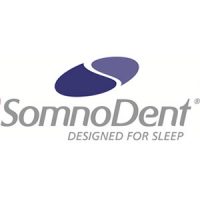Therapeutic Dental Injections
Dr Biscoe is now providing therapeutic dental injections for patients suffering from pain related to (Temporomandibular Jaw) TMJ disorder, jaw clenching and/or teeth grinding. Injectable treatments can also be used to complement aesthetic dentistry and is a minimally invasive alternative to surgically treating a high lip line, for denture patients having trouble adjusting to new dentures and lip augmentation.
While often best known for its cosmetic uses, specifically smoothing facial wrinkles, the formulation was originally intended as a muscle relaxer for medical purposes. When administered at smaller dosages, it has clinical applications to treat TMJ, teeth grinding and chronic TMJ and facial pain in an off label use.
What are the benefits of dental injectable muscle relaxants?
In dental applications, dental injectables can be used to relieve painful conditions triggered by the jaw muscles.. The most common benefit is the reduction in the number of tooth grinding/clenching events and their intensity. It also helps reduce damage to teeth, the jaw and gums and helps to lessen discomfort in the teeth and jaws. Other benefits may include the relief of tension headaches, migraines and TMJ pain and the disappearance of facial wrinkles.
What can I expect afterwards?
Muscle tenderness, pain and wrinkles usually take 2 weeks to respond. There may be mild temporary bruising, numbness or redness around the injection site. A small number of patients reported no noticeable difference after treatment. We schedule a visit 2 weeks after treatment to review the efficacy of the amount given and top up if required.
What is recovery like?
The procedure is non-surgical and non-invasive so patients can expect to return to normal activities almost immediately. However, in order to avoid spreading the toxin to other muscles, patients should not rub or massage the area injected and remain upright for many hours. Physical activity should also be limited for a time.

What is the long-term outcome?
Results of injectables generally last up to four months. Patients should wait at least three months between treatments. There is also the likely possibility that with repeated treatments, the injected muscles will atrophy allowing the patient to go longer and longer between sessions. Increased frequency of injectable treatments may cause the body to develop antibodies causing subsequent treatments to become less effective over time. Using the lowest dosage of Botox possible and extending intervals between treatments may minimize resistance.
Risks, limitations & possible complications
As with any medical procedure there are possible risks and side effects. Since this is a non-surgical procedure, the risks and possible complications are infrequent, minimal and temporary. The most commonly reported side effects are headaches, respiratory infection, flu syndrome, temporary eye-lid droop and nausea. Less commonly reported effects are pain, redness at spot of injection and muscle weakness. These symptoms are thought to be connected with the injection and occur within the first week. There could also be bruising at the injection site. These treatments should be avoided during pregnancy and lactation.
Please contact us with any further questions you may have, or to schedule a consultation to find out if this treatment is right for you.








